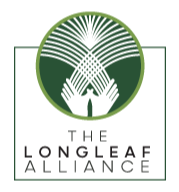Videos and Webinars
Below you can find conservation and working lands videos and webinars developed by our partners. These webinars are meant for a wide range of audiences — from technical experts and practitioners to landowners and the public.
Native Vegetation Investments Pay Conservation Dividends
Viewers will learn about native vegetation’s applicability to a myriad of conservation practices beyond wildlife uses through an exploration of the supporting scientific research applied throughout the tall grass prairie and southeastern grasslands regions. Topics covered will include soil conservation, water quality, air quality, soil health, forage, biomass and wildlife
Understory Herbicides for Bobwhites and Other Wildlife
Herbicides are an important tool in both forest and wildlife management in the south and particularly in southern pine management. The common practice of heavy chemical site prep prescriptions in forest management may not be appropriate in stands where restoration and wildlife habitat is the objective. The webinar will address herbicide uses in longleaf restoration with a focus on minimizing the impact herbicides have on a healthy and diverse groundcover, including the fine fuels and plants that are beneficial to bobwhite quail, whitetail deer and the wild turkey.
Maintaining Quail and Grassland Bird Habitat in the Agricultural Landscape
Northern bobwhite quail and many other grassland bird species have experienced significant population declines over the last several decades. Loss of native grassland habitat is one of the primary causes of these declines. The CP33 – Habitat Buffers for Upland Birds is a Continuous Conservation Reserve Program (CRP) practice that provides nesting and brooding habitat for quail and other grassland birds on less productive cropland field margins. The CP33 buffer practice can help maintain important native grassland habitat within an agricultural landscape. This webinar will discuss the CP33 practice requirements, their importance on the landscape and how best to establish, manage, and maintain the habitat quality for quail and grassland birds.
Managing Oak Forests for Northern Bobwhite Quail
The southeastern United States has millions of acres of oak dominated forests that have a closed canopy with limited herbaceous and shrub understory that northern bobwhite require. However, research has demonstrated that with adequate overstory thinning, and the use of frequent prescribed fire, these forests can support populations of Northern Bobwhite Quail, presenting perhaps the best opportunity for large-scale quail restoration in the region. Participants in the webinar will learn about managing oak forests and restoration efforts related to northern bobwhite quail.
Tractors and accidents
From seasonal discing to cutting fire breaks to planting or spraying, a tractor is a staple in bobwhite habitat management. Marion Barnes talks about how to keep this big piece of metal from injuring you.
What exactly is the SC Bobwhite Initiative?
SCDNR biologist Breck Carmichael talks about the history of the SCBI, what it does and how it is working to bring back the whistle in South Carolina.
Cost Share Programs for landowners
Creating bobwhite habitat doesn't have to be expensive. SCDNR biologist Andy Krieg explains the ins and outs of a few cost share programs that are available to help you fund improvements on your property.
Supplemental planting for quail
Food plots can be helpful for bobwhites but only if they're done properly. Marion Barnes of Clemson Extension talks about what to plant, where to plant it and when to put it in the ground to get the most benefits.
Use of fire in quail management
Prescribed fire is the most useful tool in a quail manager's toolbox. SCDNR biologist Dan Peeples discusses the ins and outs of burning, how it benefits quail and other wildlife, and how you can learn to burn on your land.
Managing agricultural land for quail
Cropland used to be synonymous with bobwhite whistles in South Carolina. As Ted Rainwater, Quail Forever Farm Bill Biologist, explains, there a many things a landowner can do to modern agriculture to make it more quail-friendly.
Forest Management for bobwhites
Trees play an important role in the well-being of bobwhites. Michael Hook of the SCDNR talks about how to manage forested land for both bobwhites and dollars.
Bobwhite history and biology
Dr. Cory Heaton of Clemson University talks about bobwhite biology and history with a focus on habitat requirements. If you think the bobwhite decline is due to something other than habitat, watch this video.
Forest Innovation Reviews (FIRz) - 2019
The U.S. Endowment for Forestry and Communities hosts the Forest Innovation Reviews to share innovative ideas about forests, forest management, forest products, and forest-rich communities. Features short TED-talk like presentations on topics like blockchain for illegal logging and creating a new wood to replace plastic.
How To Use The LP Expertise Search
This video will introduce you to the Landscape Partnership Expertise Directory. The Expertise Directory is a searchable database that simplifies the process of identifying collaborators for research, funding, and projects. It provides users with access to nonprofit leaders, scientists, academics, conservation agency staff, farmers, and landowners. In this tutorial, you will learn how to: create your profile to showcase your own expertise, use the Profile and Map Search to find contacts for your projects, and export a spreadsheet of your search results.
Lucas Furman: The Longleaf Alliance & SE Fire Map
Lucas Furman is the GIS Coordinator at the Longleaf Alliance; in this role he also serves as a project liaison for the Southeast Fire Map. He shares about the importance of collaboration across stakeholder groups to develop good planning tools and serve all actors in a landscape.
Carol Denhof: The Longleaf Alliance
Carol Denhof, President of the Longleaf Alliance, discusses landscape-level conservation of longleaf pine ecosystems across the Southeast and the role of collaboration between the Alliance, landowners/farmers, NRCS, and others.
Addie Thornton: Southeast Regional Partnership for Planning and Sustainability
Addie Thornton, Project Manager of the Southeast Regional Partnership for Planning and Sustainability (SERPPAS), discusses how diverse stakeholders from the military and conservation space can learn from one another and work together to achieve meaningful outcomes at a landscape level.
Peter Stangel: U.S. Endowment for Forestry and Communities
Peter Stangel, Chief Operating Officer of the U.S. Endowment for Forestry and Communities, discusses the importance of landscape-level conservation and partnerships as well as his vision for future collaboration.
Landscape-scale Conservation Planning
A basic overview of the principles and methods for the Appalachian Landscape Conservation Cooperative, including a discussion on the major goals of landscape conservation.
Pine health issues in the southeastern U.S.
Several biotic and abiotic stressors, including insects, pathogens, and weather, can impact pine growth in the Southeast. Dr. David Coyle (Clemson University) will provide a general overview of identification, impact, and management strategies for pine health in the region.

























